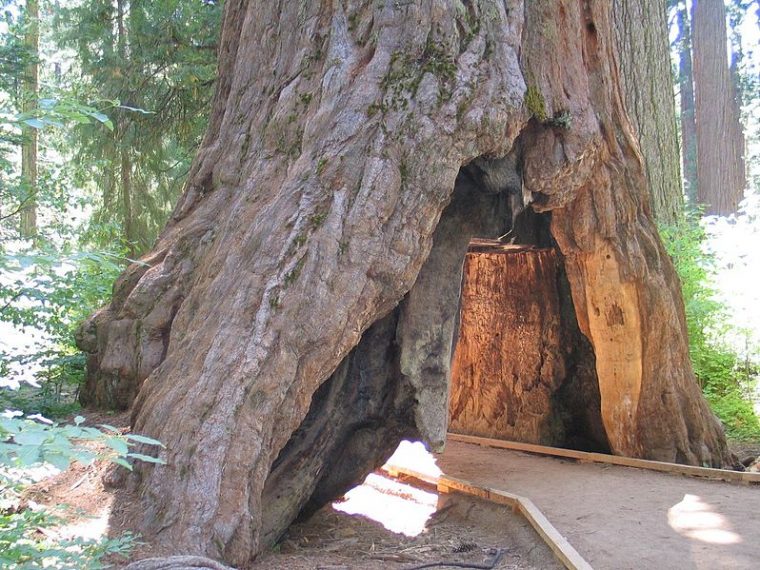If a tree falls in the forest and no one is around to hear it, does it make a sound? The answer to this adage is still up in the air, unlike the tree. However, what is clear is that if a tree falls in the forest, it does make a difference, especially if that tree was an iconic symbol of early American travel and tourism.
Earlier this week, the iconic Pioneer Cabin Tree, located in Calaveras Big Trees State Park, fell after a massive storm.
Give Back to National Parks: National Public Lands Day Encourages People to Give Back to Their Parks
The Pioneer Cabin Tree was famous for being one of the few “tunnel trees” left in the nation. A large tunnel ran through the base of the giant sequoia tree. During the 19th century, the natural opening at the base of the tree had been expanded, allowing for tourists to travel through the tunnel. Eventually, motorists were allowed to travel through the base of the tree as well, though the Calaveras Big Trees State Park service ultimately discontinued vehicular travel through tunnel trees.
According to SFGate.com, an affiliate of The San Francisco Chronicle, Jim Allday, a volunteer at Calaveras Big Trees State Park, discovered the fallen tree Sunday afternoon. The massive sequoia had shattered upon impact with the ground.
California was hit with a massive winter storm during the weekend, which caused excessive flooding in the region. Reports indicate that the storm was one of the largest and most powerful for the state in more than a decade.
While it is unclear what precisely caused the Pioneer Cabin Tree to collapse, SFGate reports that it may have due to the shallow root system that sequoia trees possess. As large and tall as these trees grow to become, their roots only travel between two to four feet deep. The flooding in the area may have compromised the tree’s root system and caused the tree itself to topple over.
Learn More About Our National Parks: Subaru Will Team Up with Brand USA for National Parks Adventure Film
According to Joan Allday, Jim Allday’s wife and another volunteer at the Calaveras Big Trees State Park, the foundation of the Pioneer Cabin Tree had been weakening for years.
“It was barely alive, there was one branch alive at the top,” she told reporters from SFGate. “But it was very brittle and starting to lift.”
Over time, tunnel trees have ultimately become an outdated trend. According to a statement from the National Park Service, the creation of these tunnel trees damages the trees themselves, so their creation has been discontinued in most areas of the state.
While motorists are unable to drive through the tunnel trees located in national parks, NPR reports that three tunnel trees with automobile access still exist in the state of California, owned by private companies.
With the collapse of the Pioneer Cabin Tree, the Calaveras Big Trees State Park has not only lost a treasured giant, but a piece of American history as well.
Zachary Berry currently resides in the Dayton, Ohio area. However, he enjoys traveling from place to place, as he was born in Oklahoma City and has also lived in Albuquerque and Orlando (such is the life of a military brat). Zachary graduated from Ohio University with a major in Strategic Communication, which is fancy talk for advertising and public relations. Beginning his career at The News Wheel as a lowly intern, he was able to climb his way to the top, eventually claiming his place within the last cubicle on the left. Other jobs that Zachary has held include driving around a safari truck at Disney’s Animal Kingdom. When he’s not putting his nose to the grindstone, Zachary enjoys watching and critiquing movies and television. See more articles by Zachary.
